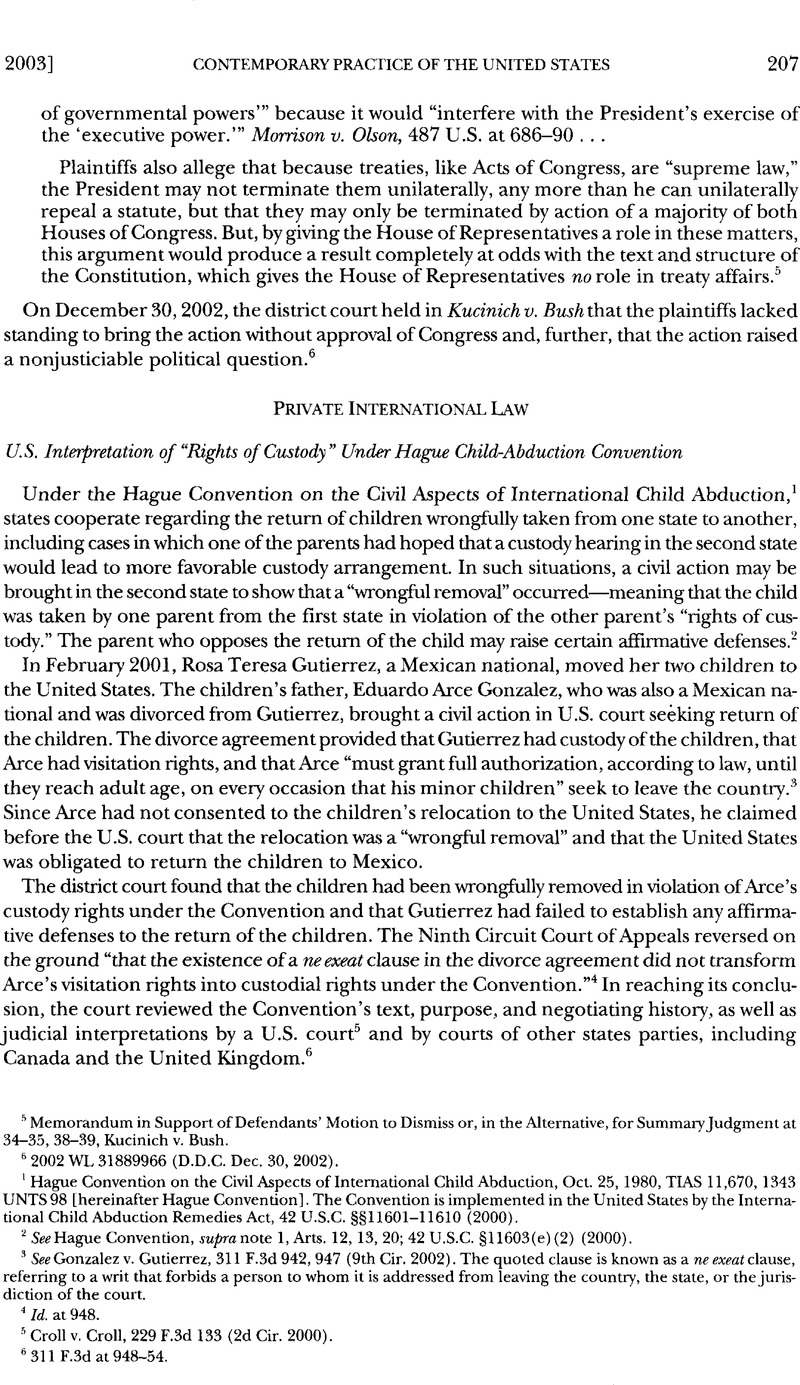Article contents
U.S. Interpretation of "Rights of Custody" Under Hague Child-Abduction Convention
Published online by Cambridge University Press: 10 March 2017
Abstract

- Type
- Contemporary Practice of the United States Relating to International Law
- Information
- Copyright
- Copyright © American Society of International Law 2003
References
1 Hague Convention on the Civil Aspects of International Child Abduction, Oct. 25, 1980, TIAS 11,670, 1343 UNTS 98 [hereinafter Hague Convention]. The Convention is implemented in the United States by the International Child Abduction Remedies Act, 42 U.S.C. §§11601-11610 (2000).
2 See Hague Convention, supra note 1, Arts. 12, 13, 20; 42 U.S.C. §11603(e) (2) (2000).
3 See Gonzalez v. Gutierrez, 311 F.3d 942, 947 (9th Cir. 2002). The quoted clause is known as a ne exeat clause, referring to a writ that forbids a person to whom it is addressed from leaving the country, the state, or the jurisdiction of the court.
4 Id. at 948.
5 Croll v. Croll, 229 F.3d 133 (2d Cir. 2000).
6 311 F.3d at 948-54.
- 1
- Cited by


